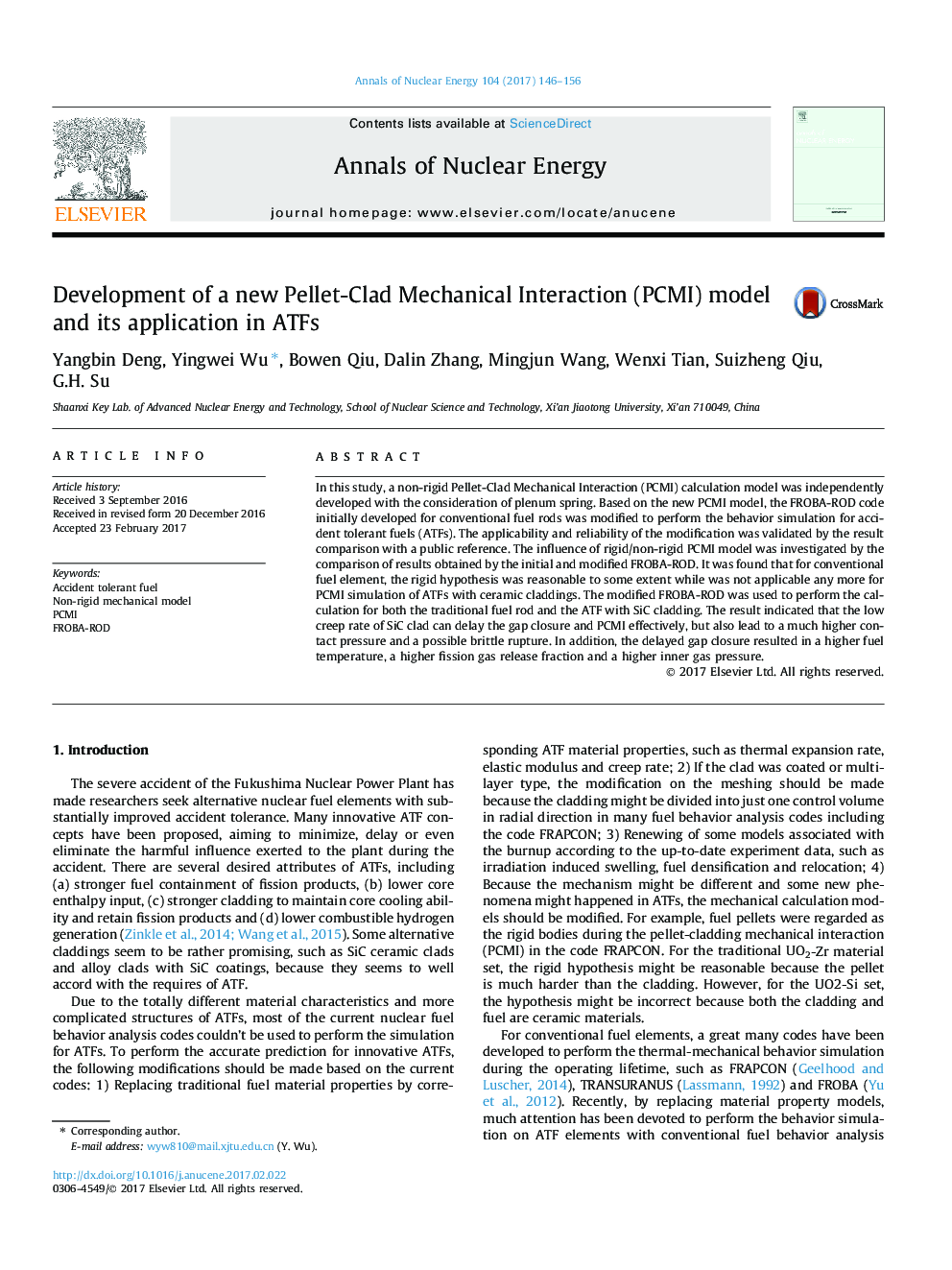| Article ID | Journal | Published Year | Pages | File Type |
|---|---|---|---|---|
| 5475280 | Annals of Nuclear Energy | 2017 | 11 Pages |
Abstract
In this study, a non-rigid Pellet-Clad Mechanical Interaction (PCMI) calculation model was independently developed with the consideration of plenum spring. Based on the new PCMI model, the FROBA-ROD code initially developed for conventional fuel rods was modified to perform the behavior simulation for accident tolerant fuels (ATFs). The applicability and reliability of the modification was validated by the result comparison with a public reference. The influence of rigid/non-rigid PCMI model was investigated by the comparison of results obtained by the initial and modified FROBA-ROD. It was found that for conventional fuel element, the rigid hypothesis was reasonable to some extent while was not applicable any more for PCMI simulation of ATFs with ceramic claddings. The modified FROBA-ROD was used to perform the calculation for both the traditional fuel rod and the ATF with SiC cladding. The result indicated that the low creep rate of SiC clad can delay the gap closure and PCMI effectively, but also lead to a much higher contact pressure and a possible brittle rupture. In addition, the delayed gap closure resulted in a higher fuel temperature, a higher fission gas release fraction and a higher inner gas pressure.
Keywords
Related Topics
Physical Sciences and Engineering
Energy
Energy Engineering and Power Technology
Authors
Yangbin Deng, Yingwei Wu, Bowen Qiu, Dalin Zhang, Mingjun Wang, Wenxi Tian, Suizheng Qiu, G.H. Su,
